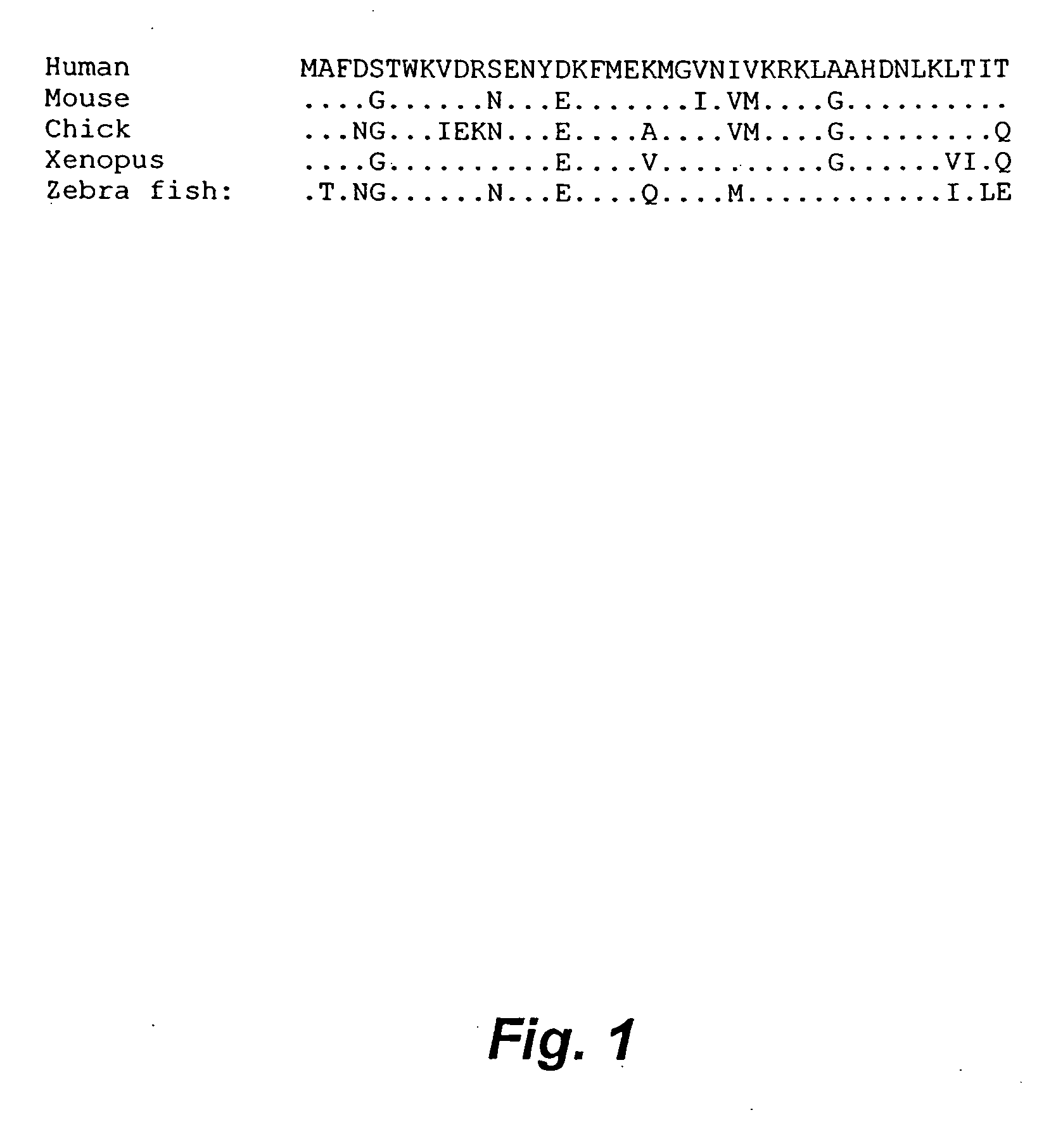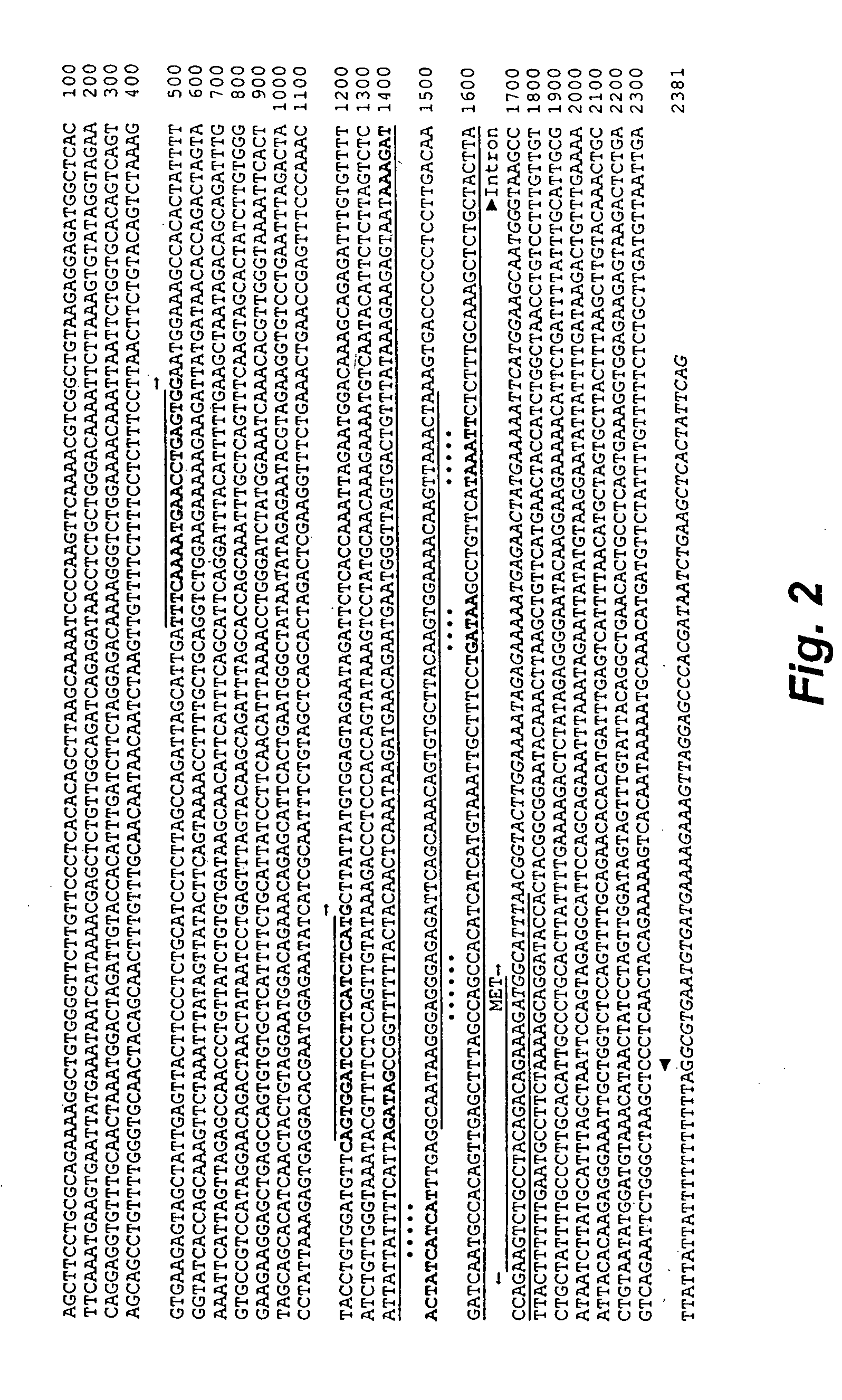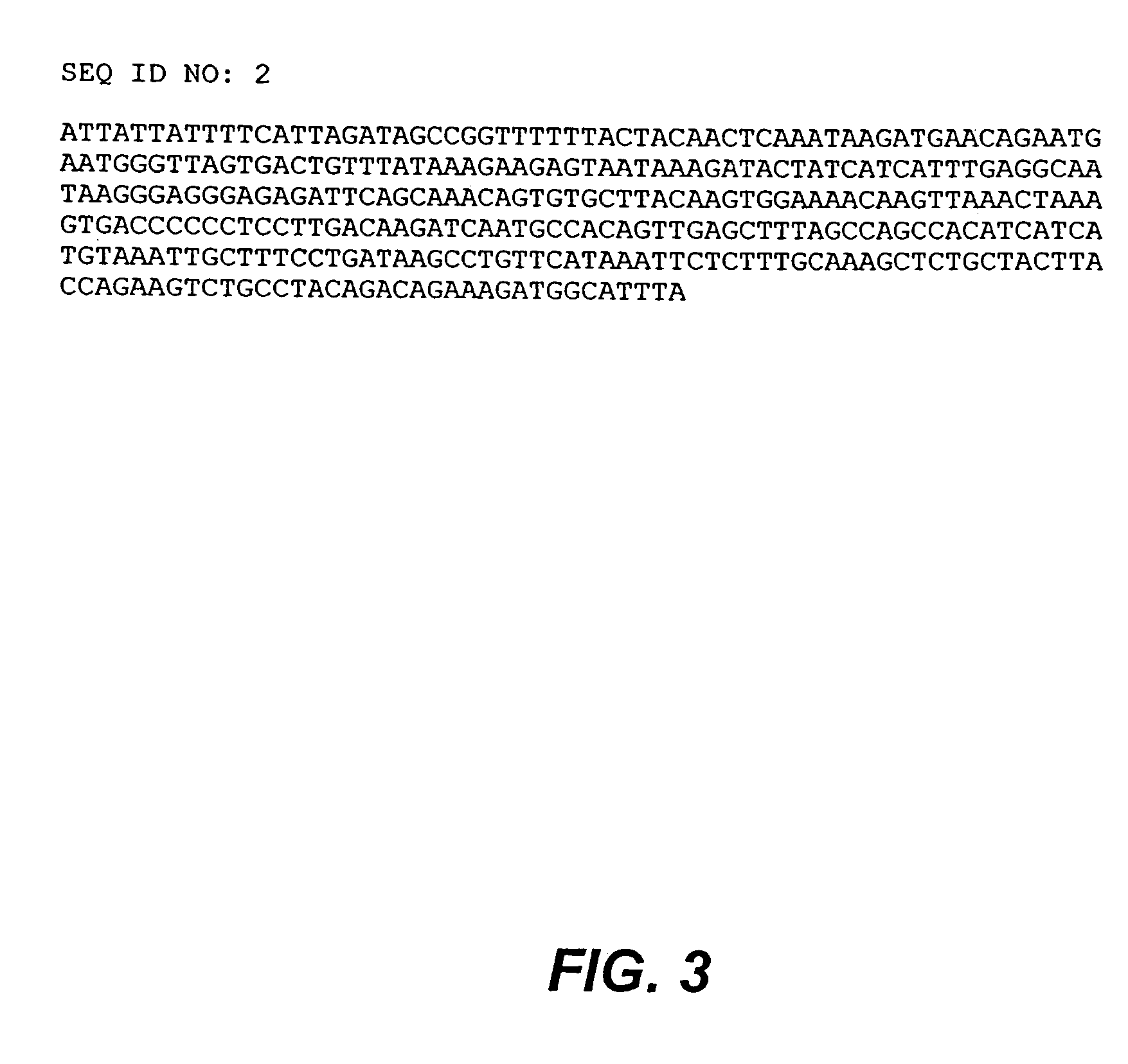Gene expression in transgenic avians
a technology of gene expression and transgenic avians, applied in the field of new avian promoters, can solve the problem of modest gene activation by these transcription factors
- Summary
- Abstract
- Description
- Claims
- Application Information
AI Technical Summary
Benefits of technology
Problems solved by technology
Method used
Image
Examples
example 1
Molecular Cloning of a Chick iFABP cDNA Fragment
[0139] Total RNA was extracted from the small intestine of an adult female chicken (Gallus gallus) by using Tri Reagent™ (Molecular Research Center Inc., Cincinnati, Ohio). The first strand cDNA was obtained by reverse transcription using oligio-deoxythymidine (12-18 mer, Amersham-Pharmacia) as the primer and Superscript™ II reverse transcriptase (GIBCO-BRL). A DNA fragment of the cFABP2 gene was amplified from the chick genomic DNA by polymerase chain reaction (PCR) using a high fidelity Taq polymerase (ExTaq™; Takara Shuzo Co. Ltd., Tokyo) and the primers FABPI-Fw1, 5′-GAGAACTATGAGAAGTTCATGG-3′ (SEQ ID NO: 6); and FABPI-Rv2, 5′-ACTTGAATTTGTTTCCNTCYTG-3′ (SEQ ID NO: 7). The primers were designed by comparing the iFABP cDNA sequences of human (Genbank accession number: M18079), mouse (M65033), rat (J00732) and Xenopus (L19946). The PCR was manually hot-started and performed at 95° C. for 30 secs, 56° C. for 30 secs, 72° C. for 45 secs...
example 2
Cloning of an Intron of Chick iFABP Gene
[0140] Chicken genomic DNA was obtained from the hepatic tissue of an adult female chicken by an ordinary method. Briefly, tissue pieces were digested with RnaseA and proteinase K, and genomic DNA was purified by phenol / chloroform extraction followed by ethanol precipitation. The PCR primers, specific to the chick iFABP gene and designed according to the sequence of the cDNA, were FABPI-Fw2: 5′-TGAGTACTATGAGAAGTTCATGGAAGCAATG-3′ (SEQ ID NO: 8) and FABPI-Rv2: 5′-TCCTGCAGAATAGTAAGCTTCAGATTATCGTG-3′ (SEQ ID NO: 9). The chicken iFABP gene fragment that contained the first intron was amplified from the chicken genomic DNA by PCR using Takara LA-Taq and by following a standard protocol for the enzyme. As a result, a single-band product of approximately 600 bp size was obtained and T / A-cloned into pGEM-T Easy. The nucleic acid sequence was then determined.
example 3
Cloning of the 5′-Flanking Region of Chicken iFABP Gene
[0141] The 5′-flanking region of chicken iFABP gene was amplified by suppression PCR, as described in Diatchenko et al., Methods Enzymol., 303:349-380 (1999), followed by nested PCR. Briefly, chicken genomic DNA was digested by Hind III because Southern blot analysis of genomic DNA using a 5′ fragment of the first intron of the chick iFABP gene indicated that Hind III digestion gave a single hybridizing band of about 2 kb. The Hind III-digested genomic DNA was treated with Klenow fragment to blunt-end the cleaved genomic fragments, and an adapter DNA (the Adapter I of the Smart™ PCR Substraction Kit, Clontech) was ligated to it. After filling the 3′ end of the adapter by ExTaq DNA polymerase at 75° C. for 5 min, the 5′-flanking region of the chick iFABP gene was amplified by suppression PCR using ExTaq polymerase, PCR1 primer: 5′-TAATACGACTCACTATAGGGC-3′ (SEQ ID NO: 10) and the cFABPI-Rv3b primer: 5′-GTGCAAGGGCAAAATAGCAGAC-3′ (...
PUM
| Property | Measurement | Unit |
|---|---|---|
| Fraction | aaaaa | aaaaa |
| Fraction | aaaaa | aaaaa |
| Fraction | aaaaa | aaaaa |
Abstract
Description
Claims
Application Information
 Login to View More
Login to View More - R&D
- Intellectual Property
- Life Sciences
- Materials
- Tech Scout
- Unparalleled Data Quality
- Higher Quality Content
- 60% Fewer Hallucinations
Browse by: Latest US Patents, China's latest patents, Technical Efficacy Thesaurus, Application Domain, Technology Topic, Popular Technical Reports.
© 2025 PatSnap. All rights reserved.Legal|Privacy policy|Modern Slavery Act Transparency Statement|Sitemap|About US| Contact US: help@patsnap.com



